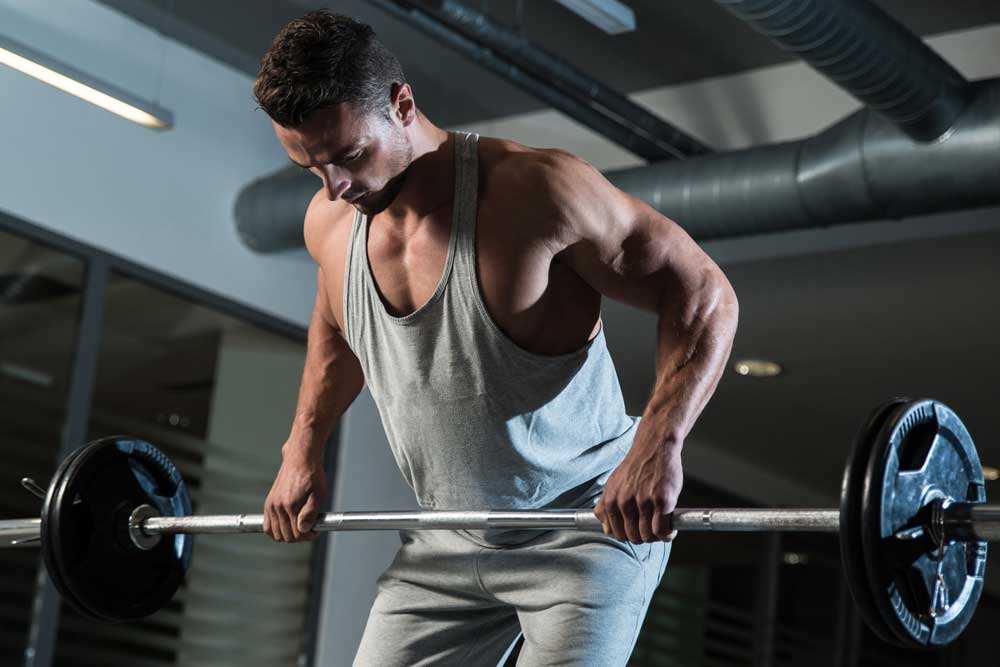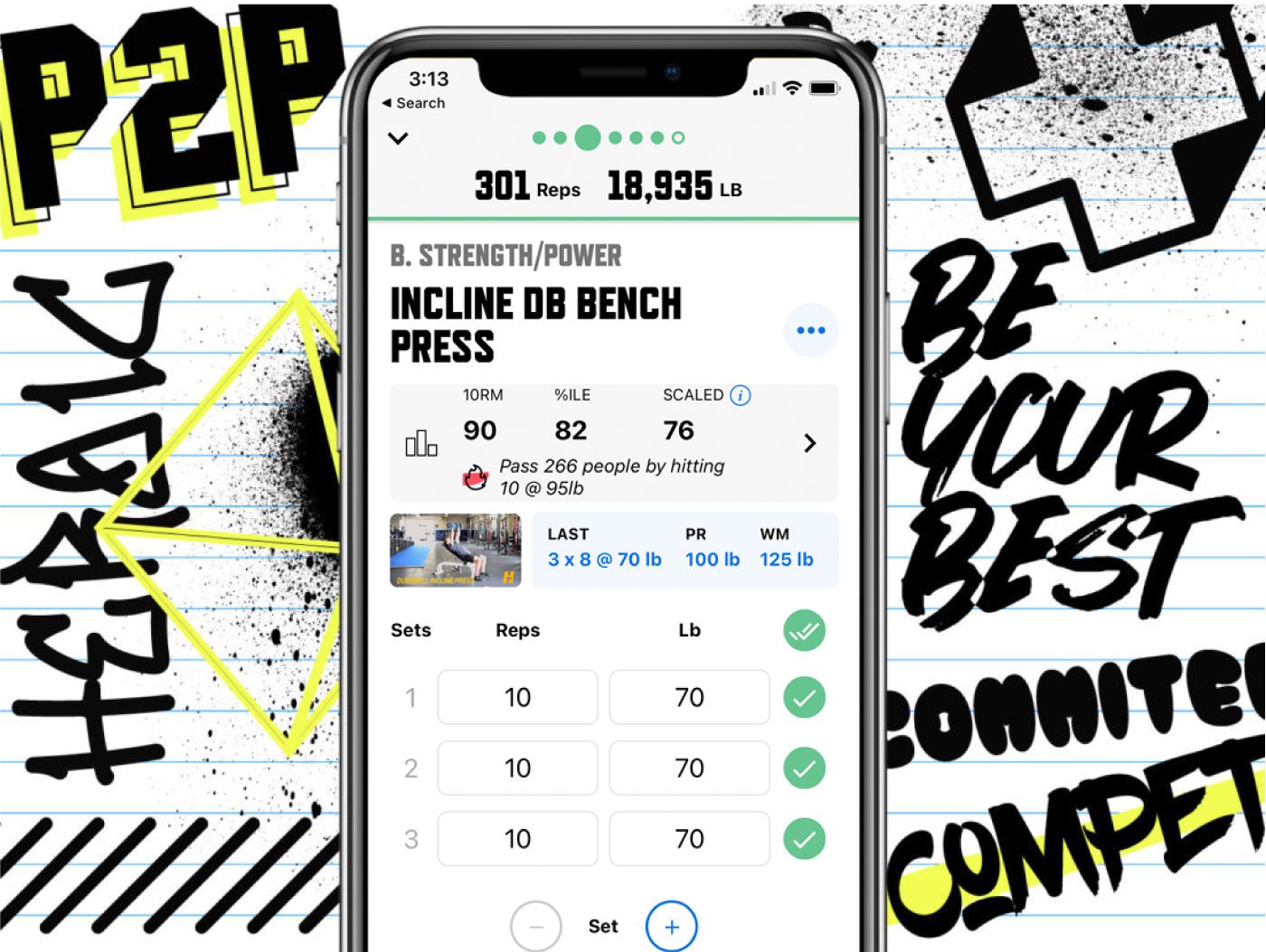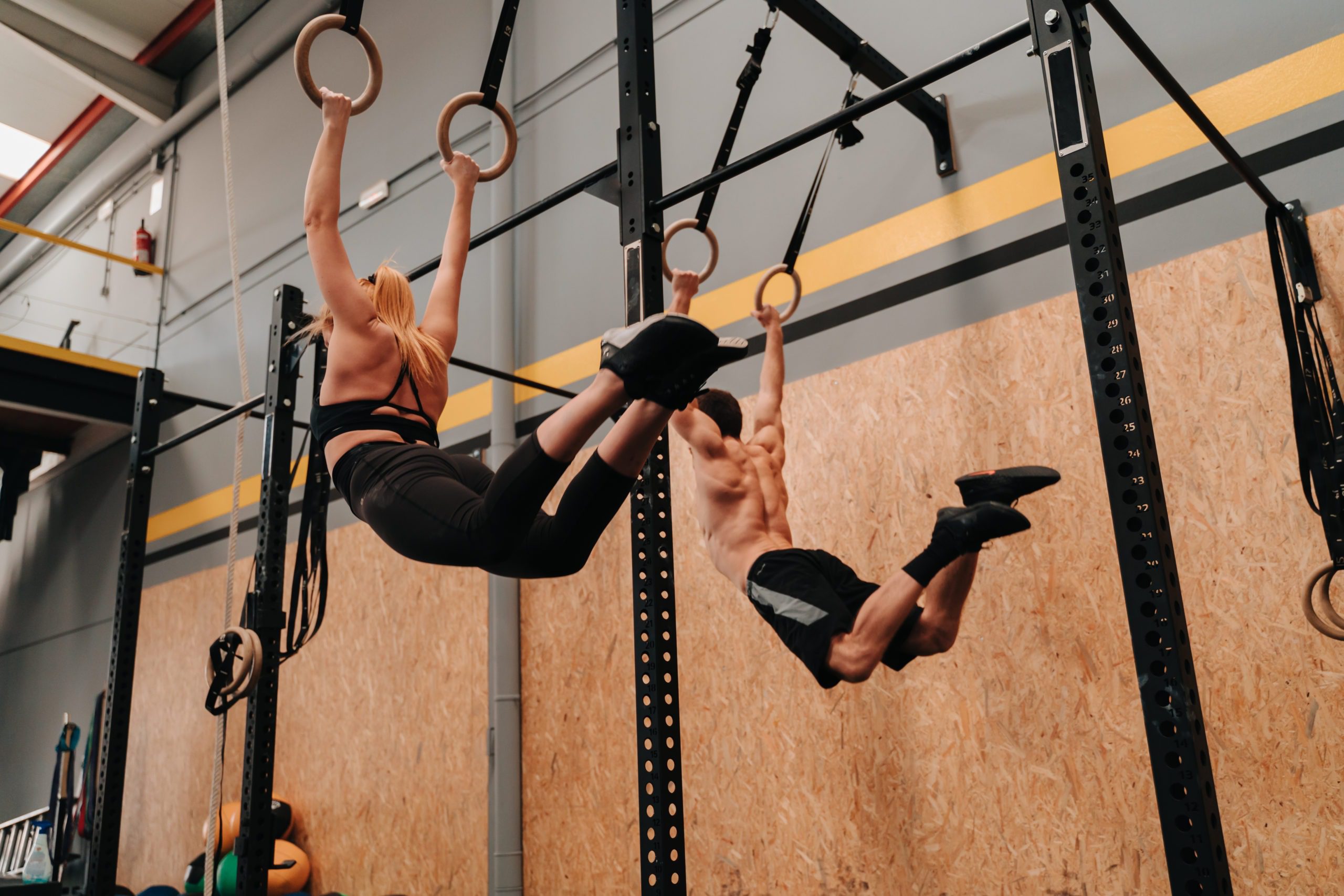Barbell Row Benefits & Points of Performance

Having a strong back translates to a ton of functional movements, but it generally means you can pick heavy things up off the floor — an extremely useful skill. There are two main ways to do this: a deadlift or a row. Everyone loves to deadlift, but chances are you’re not doing enough rowing.

Add Barbell Rows to Your Back Workouts for Serious Size
Deadlifts and clean pulls involve standing a weight up from the floor to your hips. The compound nature of this movement makes for a back like a bulldozer, but it also recruits your legs (particularly your hamstrings) and posterior chain. To further isolate your back and net some serious muscle hypertrophy, you need to row.
Two pulling variations act specifically on your back musculature: vertical pulling, like lat pulldowns or pull ups, and horizontal pulling—rows. Vertical pulling is often pretty lat dominant, while rowing can target different muscle groups in your mid and upper back like your rear delts and rhomboids.
There are a few different methods for rowing, but only one allows you to pull real weight. You can row on a machine, which has a cap to the available resistance. You can do horizontal ring rows, which are difficult to load heavily. Or you can throw stacks on a barbell and challenge your back to grow with barbell bent-over rows.
Unfortunately, barbell rowing is easy for athletes to mess up with their egos. If the weight is too heavy, it can mutate into a weird kipping upright row which won’t hit the mid-back muscles you’re aiming to grow. We thought it was a good idea to outline proper bent-over rowing form to help keep your reps honest.
Barbell rows should be a staple part of your training if you want a back spread like Kai Greene. (You won’t get it, but you can dream and do your rows anyway.)


DOWNLOAD
trainheroic’s
free APP
How to do a Barbell Row
Points of Performance
Setup
To start, load your barbell with light full-sized plates (10-15lb bumper plates) if available. If you don’t have bumper plates, just start with an empty bar. Find your stance with your feet between hip and shoulder-width apart and the bar over your midfoot. Grip the bar using an overhand or hook grip just inside shoulder-width.
Pull
Keep your arms long and lift your chest slightly to pull the bar off the floor a couple inches. Maintain a tight core and a flat, neutral spine—no excess arching or rounding. Your eyes should gaze out/down in front of you (not at your feet) to keep your neck in line with your spine.
Pull the bar against your chest until your elbows pass your torso. Keep your shoulders in front of the bar, your hips high, and your torso close to parallel with the floor. Don’t cheat your reps by swinging up too high at the top. Aim to touch the bar against your lower chest.
Coach’s Tip: Your torso is going to rise a little at the start of each rep. That’s fine, just don’t let it be an excessive movement. If you try to keep it perfectly strict, you’ll only be able to move light weight. If you violently kip into each rep with six plates on the bar, you’re doing it wrong.
Recover
Return the bar down to its starting position with your arms straight and the weight hovering off the floor. Traditional bent-over barbell rows don’t let the bar hit the floor until you’re done with the set, but there’s another way to do it…
The Marketplace: Shop Expert Programming from Real Coaches
Sometimes all you need to reach your destination on your fitness journey is an expert guide. We’ve got you covered.
The TrainHeroic marketplace is the only place to purchase programming from the World’s best coaches, delivered through the immersive training experience of the TrainHeroic app.
Browse from thousands of programs for any goal and every type of athlete.
Or, join a monthly programming membership to connect with a real coach and community of athletes training just like you. Try any programming subscription free for 7 days.

Get Explosive Back Strength with Pendlay Rows
To really set your back workouts on fire, learn to do Pendlay Rows.
Named after Level 5 weightlifting coach, founder of Wichita Falls Athletic Club, and massive S&C guru, Glenn Pendlay (RIP), this bent-over row variation involves deweighting the bar on the floor after each rep so you’re always pulling dead weight. This way you can overload your back to max effort by using a little momentum with each rep and focusing on the concentric part of the movement.
Traditional barbell rows limit the weight you can move by linking the reps together. Pendlay rows let you drop the weight to the ground with each rep in order to generate more explosive pulling force.
Bonus: Single-Arm Dumbbell Rows for Unilateral Work
A common variation for the barbell bent-over row is to use dumbbells and row one arm at a time instead.
Dumbbell rows differ from barbell rows primarily by way of your grip. With a barbell, you have to maintain an overhand grip, but a dumbbell allows you to pull with your palms facing in. Because you’re working with one arm at a time, you risk rotating your torso. Don’t do that. The same rules apply as for a barbell row: keep your back flat, core tight, and torso steady so you don’t exaggerate that slight kip and cheat yourself out of valuable reps.

Lily frei
Lily is TrainHeroic’s Marketing Content Creator and a CF-L1 with an English background. She was a successful freelance marketer for the functional fitness industry until being scooped up by TrainHeroic. An uncommon combo of bookish, artsy word-nerd and lifelong athlete, Lily is passionately devoted to weightlifting, CrossFit, yoga, dance, and aerial acrobatics. Find her showcasing her artist-athlete hobbies on IG @lilylectric.

Join the community
Sign up for the latest training news and updates from TrainHeroic

About TrainHeroic
Support
Made with love, sweat, protein isolate and hard work in Denver, CO
© 2022 TrainHeroic, Inc. All rights reserved.


